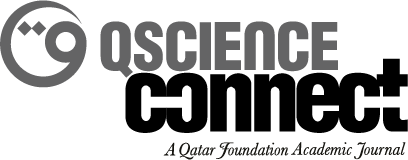-
oa Microsatellites confirm the distinctness of Bedouins among ethnic Qatari subpopulations
- Source: QScience Connect, Volume 2023, Issue 2, May 2023,
-
- 06 September 2022
- 06 March 2023
- 30 May 2023
Abstract
Background: Microsatellite markers are highly versatile tools used in a wide array of applications including paternity testing, forensic analysis, and disease markers. However, the allele frequencies of these markers can vary greatly depending on ethnic subpopulations. Thus, the discovery of three distinct Qatari ethnic subpopulations (Bedouin, Persian, and African) has prompted the need to determine the allele frequencies that are more representative of the subpopulations. Objectives: This study aims to analyze 15 autosomal microsatellite loci from individuals belonging to each subpopulation and to generate the corresponding allele frequency tables. Additionally, the microsatellite markers were further investigated to examine the mating behaviors within each subpopulation as well as looking into a possible relationship between the markers and the type 2 diabetes mellitus (T2DM). Methods: DNA samples isolated from 266 individuals of interest (Bedouin, Persian, or African) were amplified using PCR and subjected to electrophoresis. The results were analyzed using various population genetics software such as FSTAT, GenAlEx, and GENEPOP to calculate several population parameters including inbreeding coefficients, allele frequencies, and expected and observed heterozygosity. Results: The results showed that the Bedouin subpopulation was distinct from the other two subpopulations. Furthermore, the Bedouin and African subpopulations were found to have a small positive inbreeding coefficient, while the Persian subpopulation displayed a slight outbreeding pattern. Lastly, two microsatellite loci showed tantalizing differences between diabetic and non-diabetic participants. Conclusions: The distinctness of the Bedouin population could be attributable to the heterogeneity of the Persian and African subpopulations, while the positive inbreeding coefficients could be explained by the relatively high rates of consanguineous marriages. The allele frequency tables generated for each subpopulation through this study can be used to strengthen microsatellite-based genetic testing; however, more studies are needed to further examine the potential relationship between T2DM and microsatellites.



